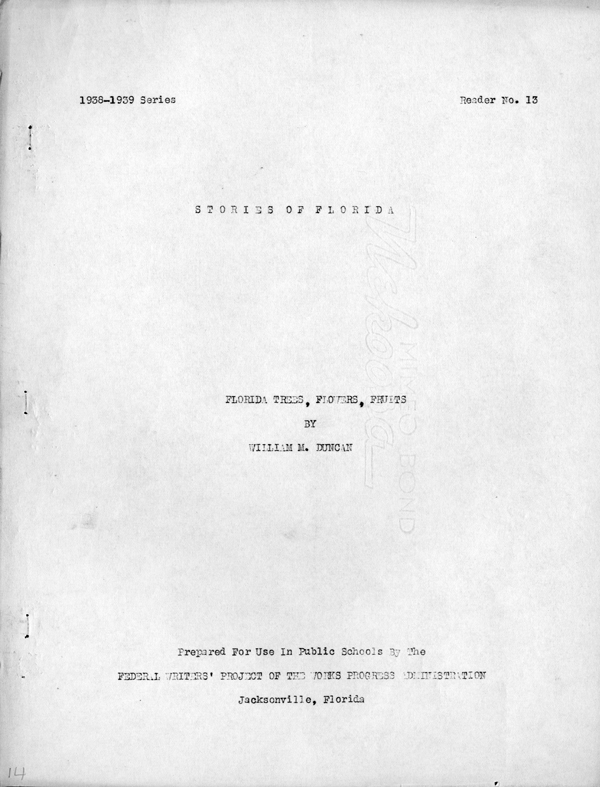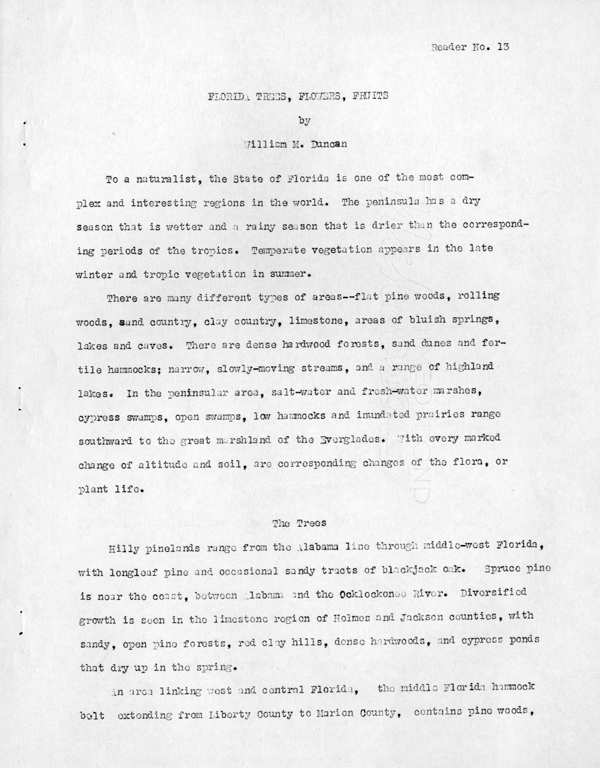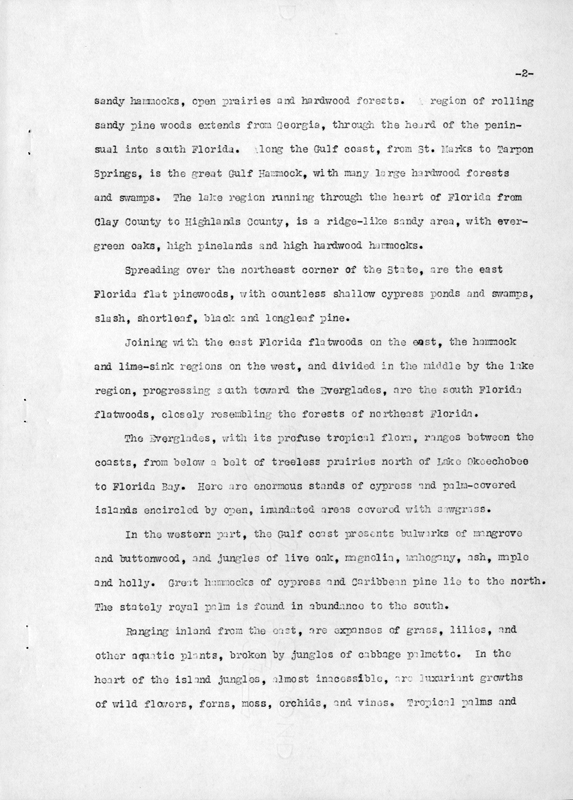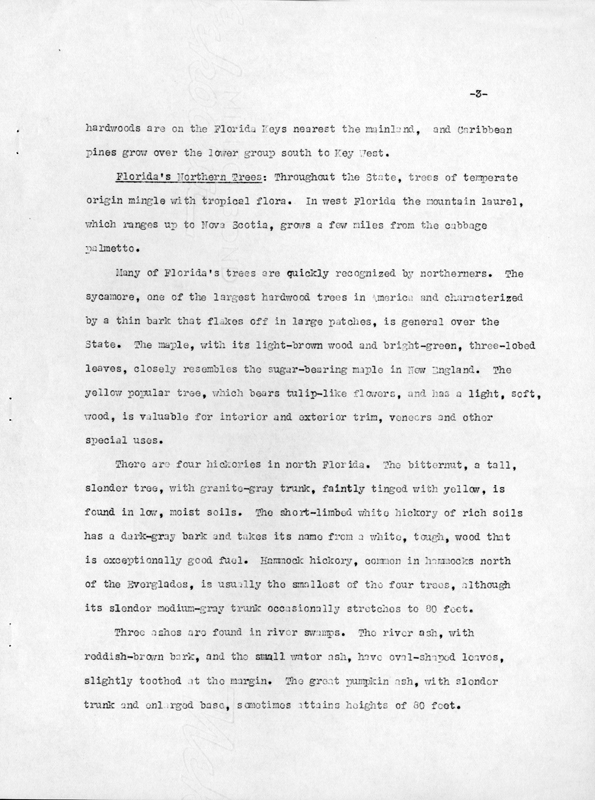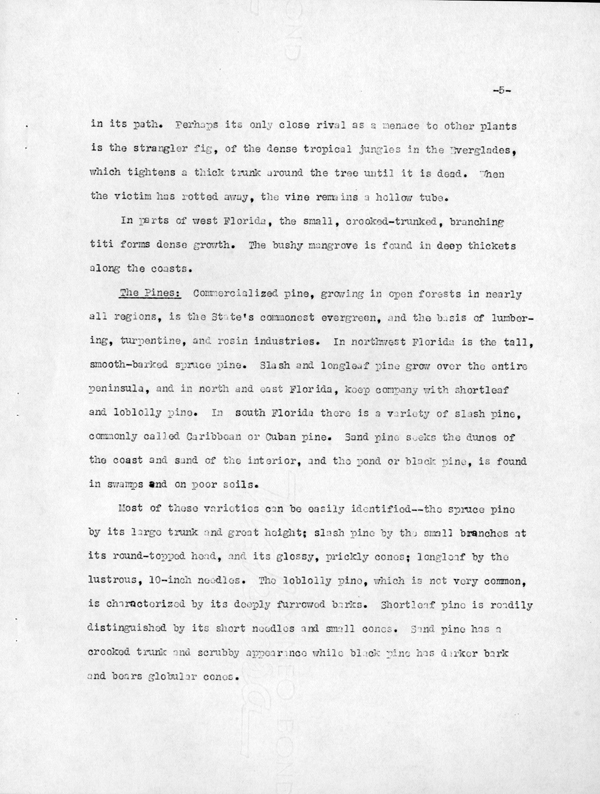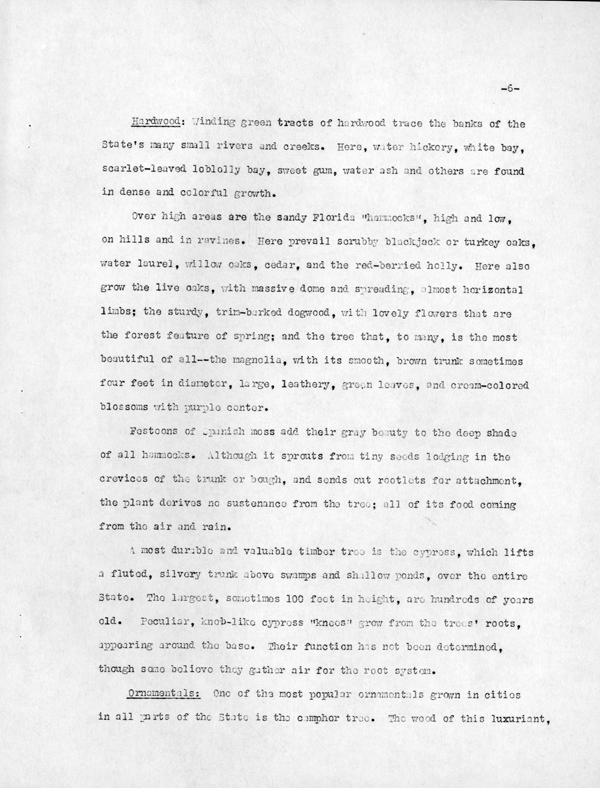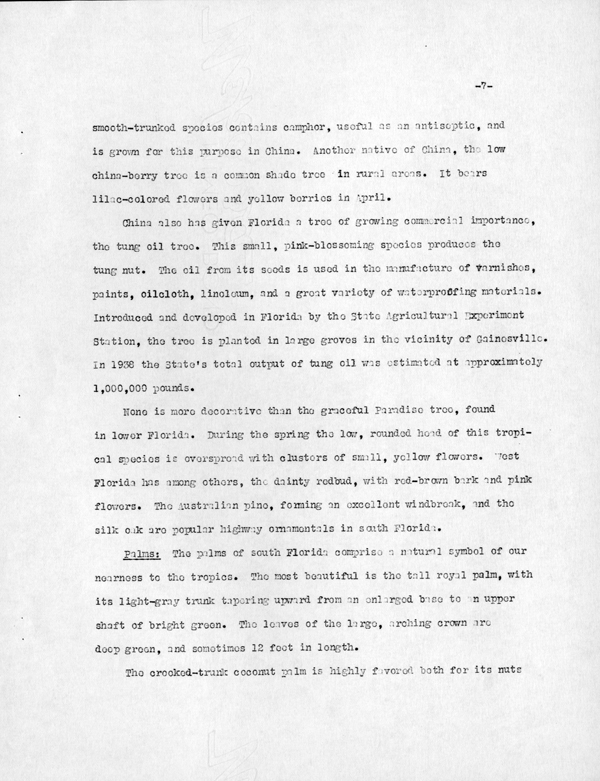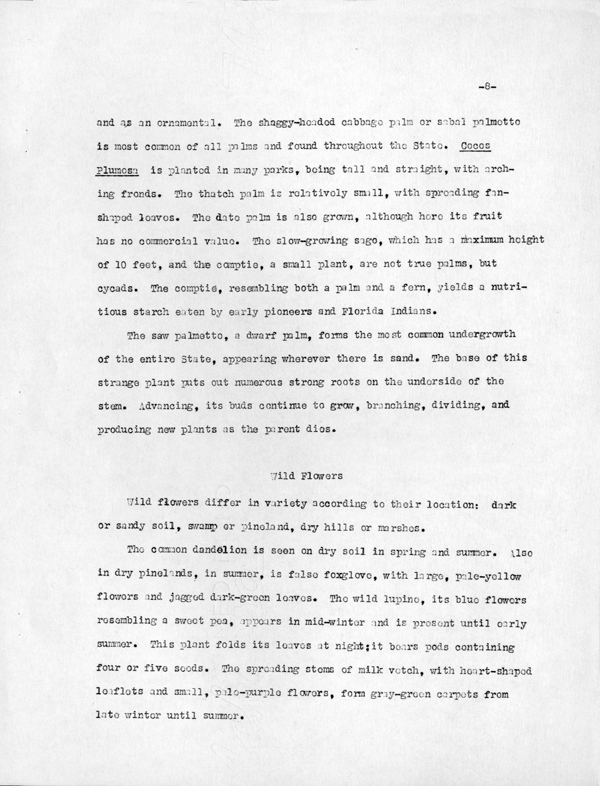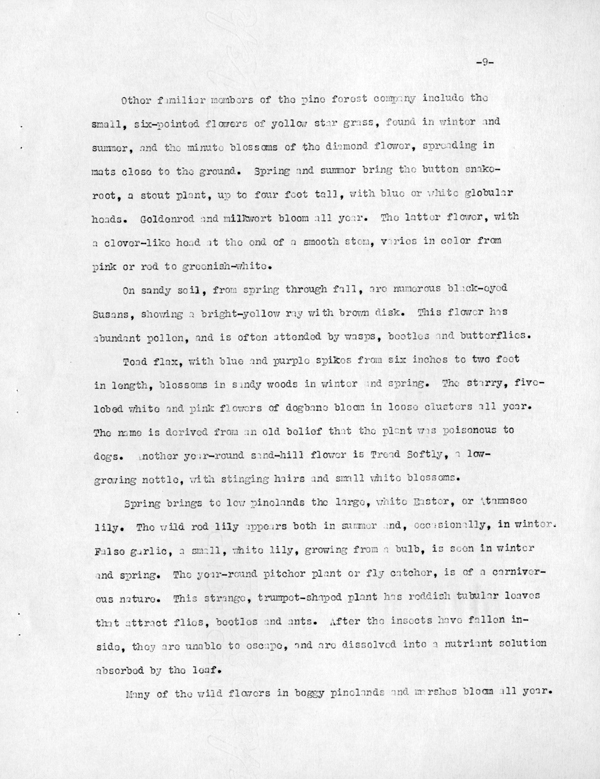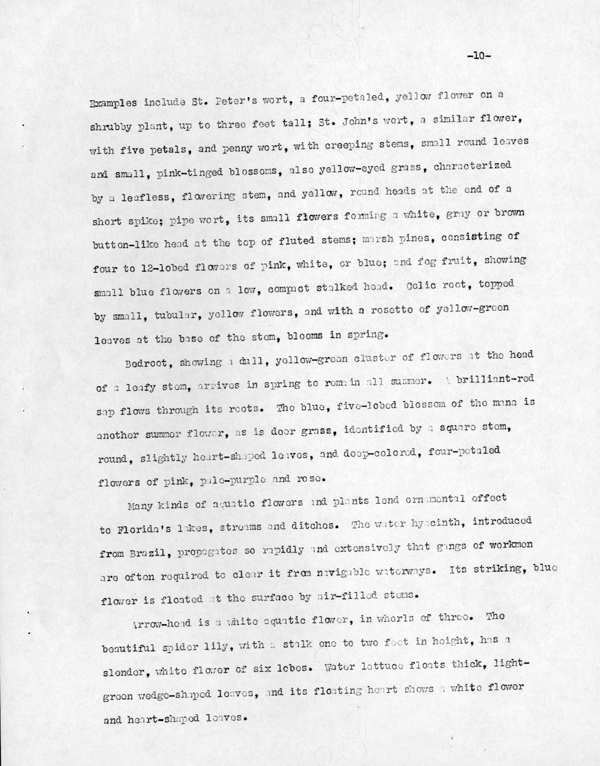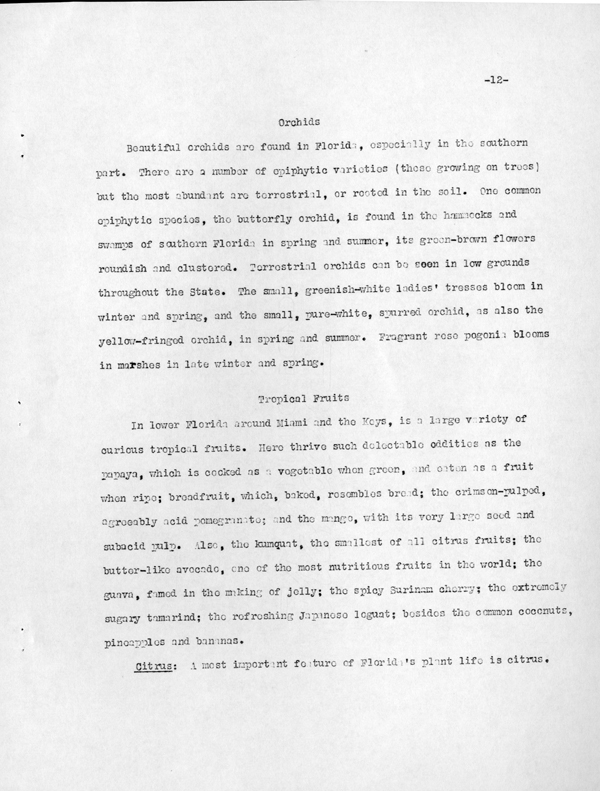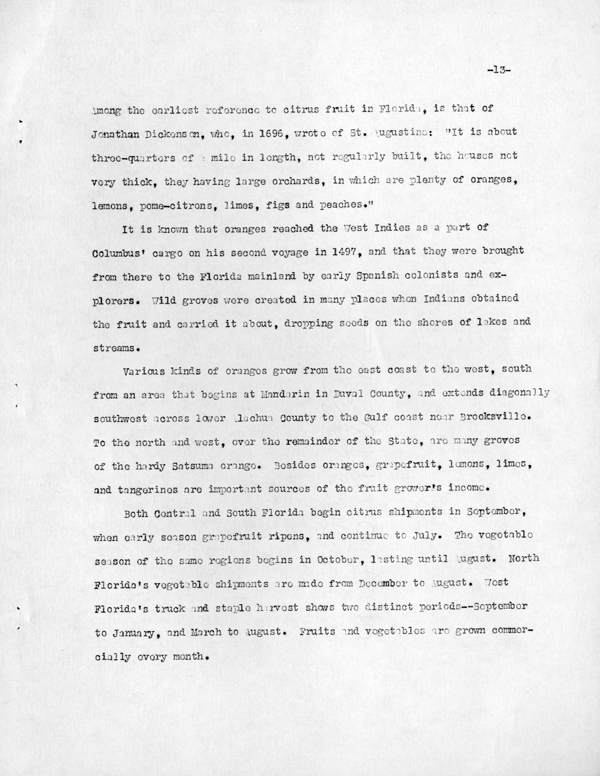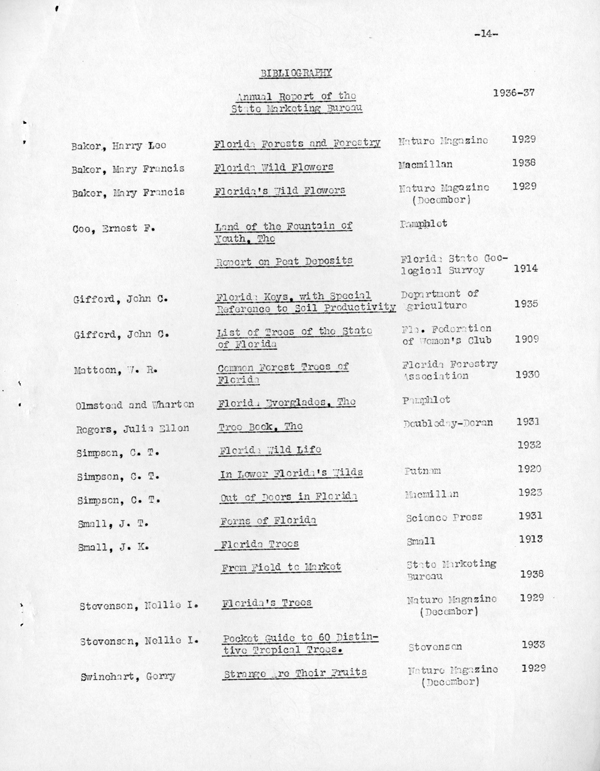Florida Memory is administered by the Florida Department of State, Division of Library and Information Services, Bureau of Archives and Records Management. The digitized records on Florida Memory come from the collections of the State Archives of Florida and the special collections of the State Library of Florida.

State Archives of Florida
- ArchivesFlorida.com
- State Archives Online Catalog
- ArchivesFlorida.com
- ArchivesFlorida.com
State Library of Florida
Related Sites
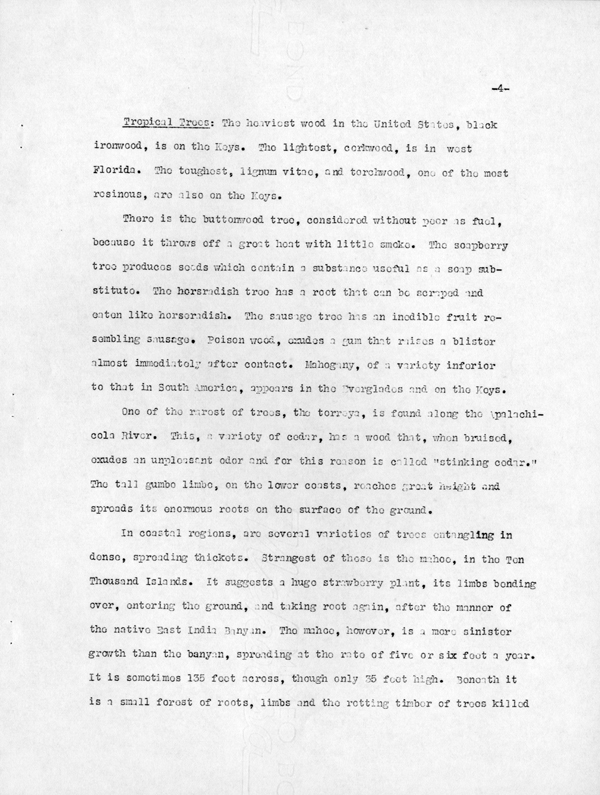
Description of previous item
Description of next item

Title
Published Date
[page 4]
Tropical Trees: The heaviest wood in the United States, black ironweed, is on the Keys.
The lightest, corkwood, is in west Florida. The toughest, lignum vitae, and touchwood, one of
the most resinous, are also on the Keys.
There is the buttonwood tree, considered without peer as fuel, because it throws off a
great heat with little smoke. The soapberry tree produces seeds which contain a substance useful
as a soap substitute. The horseradish tree has a root that can be scraped and eaten like
horseradish. The sausage tree has an inedible fruit resembling sausage. Poison wood, exudes a
gum that raises a blister almost immediately after contact. Mahogany, of a variety inferior to that
in South America, appears to the Everglades and on the Keys.
One of the rarest of trees, the torreya, is found along the Apalachicola River. This, a
variety of cedar, has a wood that, when bruised, exudes an unpleasant odor and for this reason is
called "stinking cedar." The tall gumbo limbo, on the lower coasts, reaches great height and
spreads its enormous roots on the surface of the ground.
In coastal regions, are several varieties of trees entangling in dense, spreading thickets.
Strangest of these is the mahee, in the Ten Thousand Islands. It suggests a huge strawberry
plant, its limbs bending over, entering the ground, and taking root again, after the manner of the
native East India Banyan. The mahee, however, is a more sinister growth than the banyan,
spreading at the rate of five or six feet a year. It is sometimes 135 feet across, though only 35
feet high. Beneath it is a small forest of roots, limbs and the rotting timber of trees killed
Title
Subject
Description
Creator
Source
Date
Contributor
Format
Language
Type
Identifier
Published Date
Image URL
Thumbnail
Transcript Path
Image Path
Image Path - Large
Chicago Manual of Style
Duncan, William M. Florida Trees, Flowers, Fruits. 1938. State Archives of Florida, Florida Memory. <https://www.floridamemory.com/items/show/181519>, accessed 28 December 2025.
MLA
Duncan, William M. Florida Trees, Flowers, Fruits. 1938. State Archives of Florida, Florida Memory. Accessed 28 Dec. 2025.<https://www.floridamemory.com/items/show/181519>
AP Style Photo Citation
(State Archives of Florida/Duncan)

 Listen: The Gospel Program
Listen: The Gospel Program